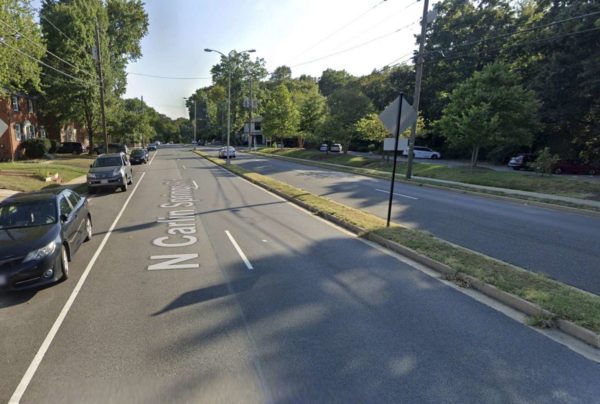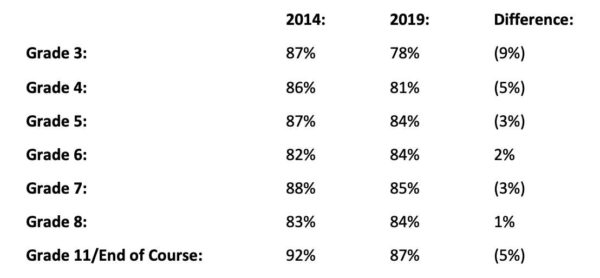 Peter’s Take is a biweekly opinion column. The views expressed are solely the author’s.
Peter’s Take is a biweekly opinion column. The views expressed are solely the author’s.
The Rouse property is a 9-acre parcel of privately-owned land, located in the Dominion Hills neighborhood at 6407 Wilson Boulevard (corner of N. McKinley Road). On March 4, ARLnow.com reported this property might be for sale for “around $30 million” (roughly double the current assessed value):
“The property is listed as a ‘generational’ site in the county’s Parks Master Plan (page 162).”
Columnist Charlie Clark reported on April 27 that the owner is evaluating a serious offer. If the County loses the strategic opportunity to acquire this unique property, that represents a serious leadership failure.
Declining parkland to population ratio
Arlington comprises only 26 square miles, significant portions of which are controlled by the federal government. We are the smallest U.S. county.
As approved in April 2019, the Parks Master Plan included a public commitment to acquire 3 acres of open space per year for the next 10 years. Honoring this commitment is vital because of the continuing decline in Arlington’s ratio of parkland to population.
A comprehensive 2016 report by the Arlington Civic Federation (“Civ Fed report”) documents this decline (at p. 5):
“As of 2015, Arlington County had 1,784 acres of parkland within its borders. Of those 1,784 acres, 949 acres were owned by Arlington County, 700 acres were owned by the National Park Service (most of which is Arlington Cemetery), and 135 acres were owned by the Northern Virginia Regional Park Authority.
“In 1995, Arlington County had 10.8 acres of parkland per 1,000 residents. By 2014 the County’s population had grown by over 43,000 residents, and the parkland to population ratio had declined to 7.9 acres of parkland per 1,000 residents.
“By contrast, Washington, DC, has 13.2 acres of parkland per 1,000 residents, and Fairfax County has 28.3 acres of parkland per 1,000 residents.”
Arlington’s ratio of parkland to population certainly has continued to decline since 2016, as Arlington’s population has surged, enabled by repeated County government decisions to accelerate development and to authorize even more density.
An Arlington Profile 2019 report projects that Arlington’s population will rise by about 50,000 people by 2040. Without adding more parkland inventory, our ratio of parkland to population will continue to degrade.
As explained by my colleagues at Arlingtonians for our Sustainable Future (ASF), many public uses for this land — if not developed for market-rate residential housing — include parkland, flood maintenance and/or a community land trust for affordable housing (e.g., see here) If the last, some affordable housing units could be built, carefully blended into the parkland setting.
Despite the Parks Master Plan’s commitment to acquire 30 acres of open space over the next 10 years, the County’s current (pre-COVID-19) Capital Improvement Plan (CIP) contains zero dollars to acquire open space. Acquiring the uniquely large Rouse property, and devoting all or significant portions of it to parkland, would be a major down payment on this commitment.
Even in these challenging budget times, the County still could afford to make this acquisition because of the flexibility provided by the County’s ample cash reserves.









